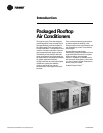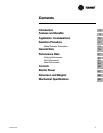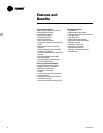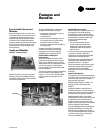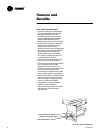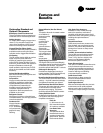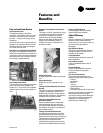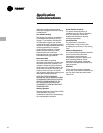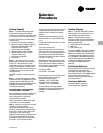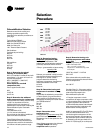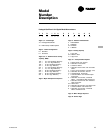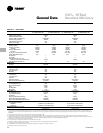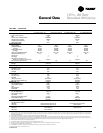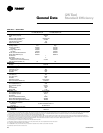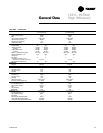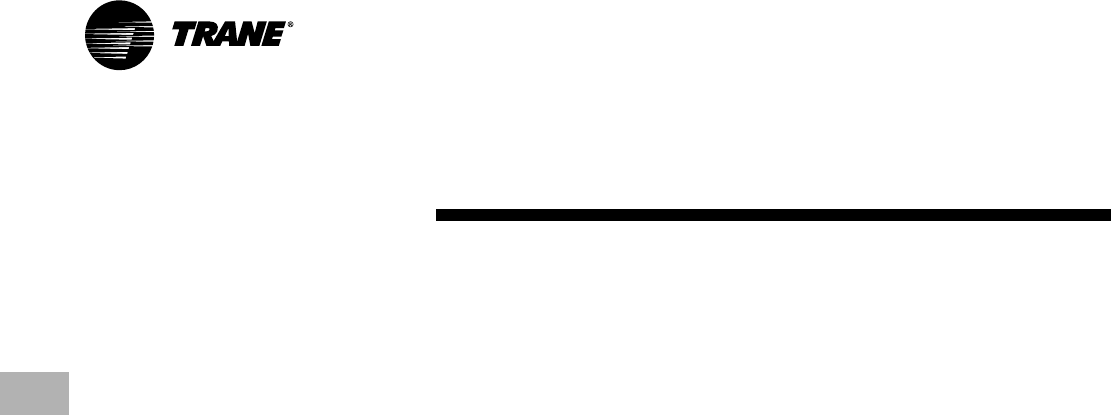
RT-PRC001-EN10
Application
Considerations
Power Exhaust Accessory
The power exhaust accessory is
available on all 12½-25 tons downflow
units. This accessory can be field
installed and will assist in relieving
building pressurization.
Condensate Trap
The evaporator is a draw-thru
configuration. A trap must be field
provided prior to start-up on the cooling
cycle.
Clearance Requirements
The recommended clearances identified
with unit dimensions should be
maintained to assure adequate
serviceability, maximum capacity and
peak operating efficiency. Actual
clearances which appear inadequate
should be reviewed with the local Trane
sales personnel.
Unit Pitch
These units have sloped condensate
drain pans. Units must be installed level;
any unit slope must be toward access
side of unit.
Application of this product should be
within the cataloged airflow and cooling
considerations.
Low Ambient Cooling
This Voyager line features, as standard,
low ambient cooling down to 0°F. The
Voyager™ line features, with ReliaTel™
microprocessor controls, low ambient
cooling down to 0°F. The following options
need to be included/considered when low
ambient applications are required:
continuous fan operation, crankcase
heaters, thermal expansion valves,
frostat. Contact your local Trane
Representative for more assistance with
low ambient cooling applications.
Barometric Relief
This product offers an optional
barometric relief damper included in the
downflow economizer accessory. This
accessory consists of gravity dampers
which open with increased pressure. As
the building air pressure increases, the
pressure in the unit return air section
also increases, opening the dampers and
relieving the conditioned space.
NOTE: THE EFFECTIVENESS OF
BAROMETRIC RELIEF DAMPER DURING
ECONOMIZING OPERATION IS SYSTEM
RELATED. PRESSURE DROP OF THE
RETURN AIR SYSTEM SHOULD BE
CONSIDERED TO CONTROL BUILDING
PRESSURIZATION.
Heating Operation
The heat exchanger is manufactured with
aluminized steel. To prevent
condensation within the heat exchanger,
do not exceed 50% outside air.



